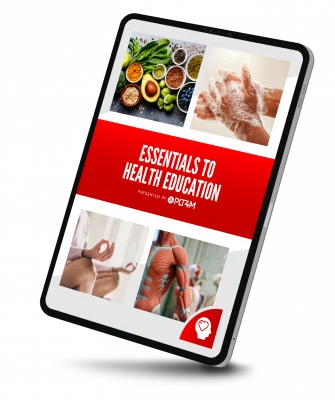Health education is a critical component of a well-rounded educational program, equipping students with the knowledge and skills they need to make informed decisions about their health and well-being. A comprehensive health education curriculum serves as the cornerstone for promoting healthy lifestyles and behaviors among young people, which can have a lasting impact on their future. In this blog, we will delve into the importance of a health education, the key components that make it effective, and how it can be integrated into schools to foster a healthier generation.
Importance Of Health Education Curriculum
Communities and school districts have high aspirations for students to live productive, successful, and fulfilling lives. But without good health, students’ ability to engage and excel is severely compromised. For example, chronic illnesses, poor nutrition, and unmanaged stress can lead to absenteeism, decreased concentration, and lower academic performance.
Health education curriculum isn’t a nice to have, it is a need to have for school districts looking to put students in the best possible position to succeed in school, in the community, and in all future pursuits.
Therefore, prioritizing health education curriculum ensures that students are given the skills and resources to take full advantage of their educational opportunities, making it an essential component of school districts education systems. Health education curriculum can equip students with the skills and knowledge to actively engage in healthy behaviors that support their physical, mental, and emotional well-being.
Challenges Of Health Education Curriculum
Implementing a comprehensive health education curriculum in schools isn’t easy! Let’s be honest, health class has a bad wrap! And beyond just the common misconceptions of school health class, there are also a lot of other challenges teaching health!
First, health education curriculum is under increasing scrutiny from parents, community members, and media. Certain health topics are sensitive and can create discomfort that makes picking the right health education topics challenging.
In addition, with the rapid rise in technology, students have access to a vast amount of information (and misinformation) about health. Students need now more than ever to develop skills in health literacy to determine what is valid health information in an age of misinformation.
Next, school districts are faced with keeping health education curriculum relevant and up to date. Many schools struggle with outdated curriculum materials and textbooks that do not reflect current scientific understanding or best practices. There is a desperate need for valid health information that can also be readily updated as emerging issues present themselves.
These, among other challenges, create a clear call to action for high quality, comprehensive health education curriculum for schools. So where do we begin?

National Health Education Standards
When planning and mapping out health education curriculum, the National Health Education Standards (NHES) is a great place to start. Recently released in 2024, Shape America has helped to give valuable insights to health education curriculum and standards via the NHES.
A notable change in the new standards is the more broadly defined goals and outcomes that support the health and well-being of students, while giving school districts autonomy and flexibility to make health education curriculum meaningful and relevant to students. In addition, a greater focus is placed on overall health and well-being, encompassing physical, mental, and emotional health.
The Shape America National Health Education Standards outline how students will be able to:
Use functional health information to support health and well-being.
Analyze influences that affect health and well-being.
Access valid and reliable resources to support health and well-being.
Use interpersonal communication skills to support health and well-being.
Use a decision-making process support personal and community health and well-being.
Use a goal-setting process to support health and well-being.
Demonstrate practice and behaviors to support health and well-being.
Advocate to promote health and well-being for self and others.
Get Our FREE Health Sample Lesson Pack
5 Skills-Based Health Lessons
Get five free health lessons, pulled directly from our Health Curriculum. With lessons on Nutrition, Sleep, Bullying and more, there are tons of valuable insights!
Health Education Curriculum Framework
From the National Health Education Standards, schools can create a framework for success. Shape outlines the steps below:
The National Health Education Standards serve as overarching goals for skills-based health education curricula.
Educators determine functional health information (i.e., content) and the health-related skill (e.g., interpersonal communication, decision-making, analyzing influences) within which content is taught.
Performance indicators articulate more specific goals that lead toward progress of the standards.
This framework allows for teachers to mold health education curriculum by grade level, state or local guidelines, student interests and needs, and more. While an overarching goal of a school district might be to educate students on something like “disease control,” each grade level might determine different health information and skills to teach this for different groups. Effective health education curriculum can and should be flexible!
Health Education Curriculum Topics & Technology
When designing and implementing health education curriculum, many schools look to balance teaching students about health-enhancing behaviors (physical activity, nutrition, etc) and health-related risk behaviors (Drug, Substance, and Alcohol Prevention, Disease Control, etc.). This balance allows schools to encourage students to make health-promoting decisions throughout their daily lives.
PLT4M, a digital curriculum tool, has a robust library of current and up to date curriculum that supports the holistic health education of students. While many schools use PLT4M during physical education to teach a wide variety of physical activity and exercise options, they also tap into PLT4M for the wide range of health education curriculum they now offer.
Health education curriculum topics offered in PLT4M include:
Check out free health education lesson plan topics below:
Key Takeaways On Health Education Curriculum
Health education curriculum can help enhance and promote health and well-being for students, and equip them with skills and knowledge that will go well beyond their time in school. A few key takeaways to health education curriculum include:
Know Your Audience – Keep it relevant and engaging to students so they can make meaningful connections from class to the real world.
Make It Comprehensive – Health and physical education have long been tied together in many states and school districts. Invest in a comprehensive health and physical education program that supports students total physical, emotional, and mental well-being.
Tap Into Technology – Textbooks are great, but become quickly outdated in the world of health. With cutting-edge digital curriculum, you can guarantee you have evidence-based information for students health education journey.
FAQ
Will PLT4M create more health units?
Yes! PLT4M is always working to update and enhance the curriculum offered to students, teachers, and schools. In fact, many programs are created in conjunction with current partner schools. Let us know if there is a specific program you are looking for, and our team will work hard to get on it!
Are the PLT4M programs standards aligned?
Yes, PLT4M curriculum and technology aligns to Shape Standards!
SHAPE America’s National Standards & Grade-Level Outcomes for K-12 Physical Education define what a student should know and be able to do as result of a highly effective physical education program. Our standard alignment guide demonstrates how the PLT4M programs align with grade level standards, helping you achieve and accomplish a standards-based curriculum.
Does PLT4M have a sexual health program?
No, PLT4M does not currently offer reproductive and sexual health content. But with PLT4M’s content builder, you can take your trusted sexual health content approved by your school and state and deliver it via PLT4M’s technology like any other program.
What other types of lesson plans and workouts does PLT4M have?
Consider PLT4M your full learning management system for health and physical education.
PLT4M has a full slate of PE lessons for physical education teachers to choose from! From PE games to fitness activities, PLT4M has countless options. Check out some of the most popular below:
Get Our FREE Health Sample Pack
5 Skills-Based Health Lessons
Get five free health lessons, pulled directly from our Health Curriculum. With lessons on Nutrition, Bullying, Sleep and more, there are tons of valuable insights!






